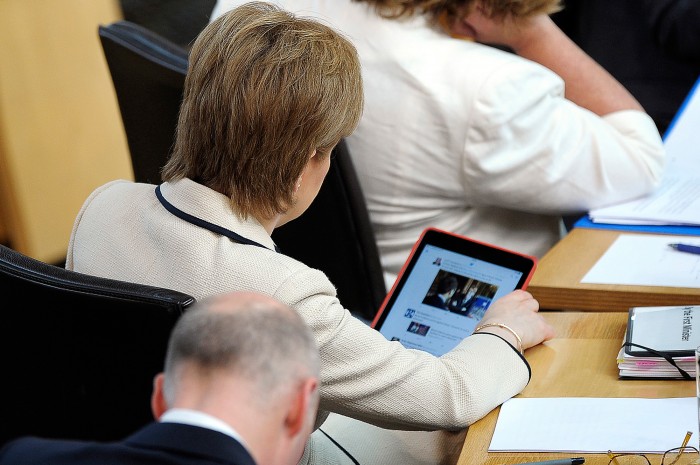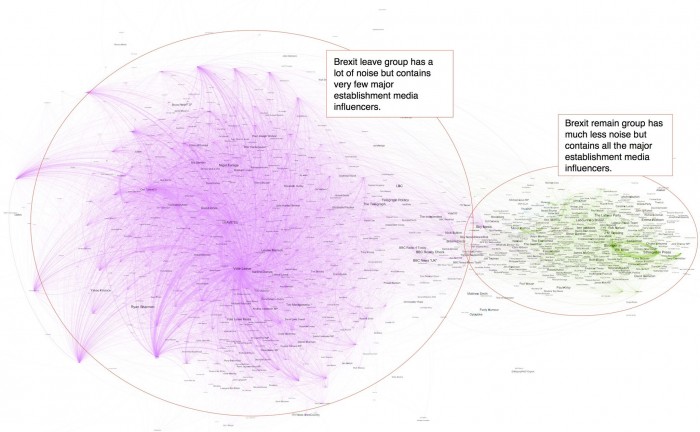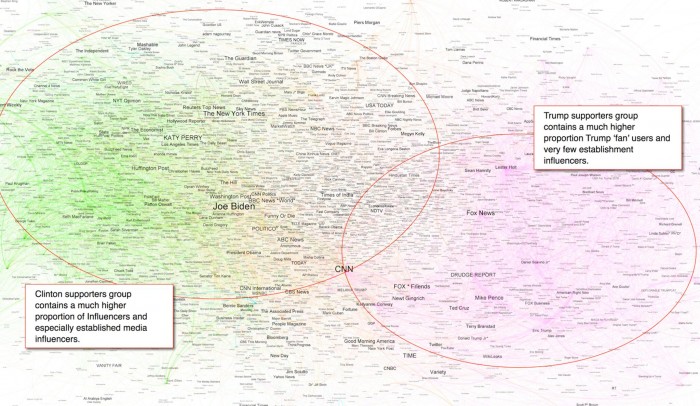Twitter May Have Predicted the Election

Just how useful is Twitter as a measure of broad sentiment?
One group's study of Brexit and the U.S. presidential election claims that for those looking at the right signals, the surprising outcomes of a number of recent elections were not so surprising at all.
“Our analysis was showing something, but our beliefs were different,” says Vishal Mishra, CEO of Right Relevance, which sells a research platform focused on influence. “We thought, how is Trump going to win? But our analysis kept showing us.”
Leading up to the U.S. election, the company was raising the possibility of a surprise outcome.
Among the signals they tracked was the number of supporters on Twitter associated with each side, adjusted for bots. Just as important is a follower’s influence, measured in part by retweets, mentions, and replies, as well the quality of their network of connections and whether they bridge different communities.

In both the Brexit vote and the presidential contest, these signals looked better ahead of the vote for the side that eventually won, Mishra says.
Deb Roy, a professor at MIT and chief media scientist at Twitter who has been closely tracking the election on Twitter as well, agrees that there were signals on Twitter, but resists the temptation to label them as “clear.”
In an e-mail response to questions from MIT Technology Review, Roy wrote, “We have entered new territory over the past year in terms of media dynamics” among social media networks, mainstream media sources, and fringe sources. He also wrote that there are “unique elements” to the events that “make it very difficult to claim clear interpretability of Twitter signals.”
On issues, there has been a long-term divergence between what mainstream media tweets about and what others do. In early November, the Right Relevance analysis found the trending terms on Twitter to be increasingly anti-Clinton, with “FBI,” “Podesta emails,” and “Comey” among the most discussed and shared terms.
This wasn’t true among the Twitter accounts from large media sources.

Keep Reading
Most Popular
Large language models can do jaw-dropping things. But nobody knows exactly why.
And that's a problem. Figuring it out is one of the biggest scientific puzzles of our time and a crucial step towards controlling more powerful future models.
The problem with plug-in hybrids? Their drivers.
Plug-in hybrids are often sold as a transition to EVs, but new data from Europe shows we’re still underestimating the emissions they produce.
Google DeepMind’s new generative model makes Super Mario–like games from scratch
Genie learns how to control games by watching hours and hours of video. It could help train next-gen robots too.
How scientists traced a mysterious covid case back to six toilets
When wastewater surveillance turns into a hunt for a single infected individual, the ethics get tricky.
Stay connected
Get the latest updates from
MIT Technology Review
Discover special offers, top stories, upcoming events, and more.